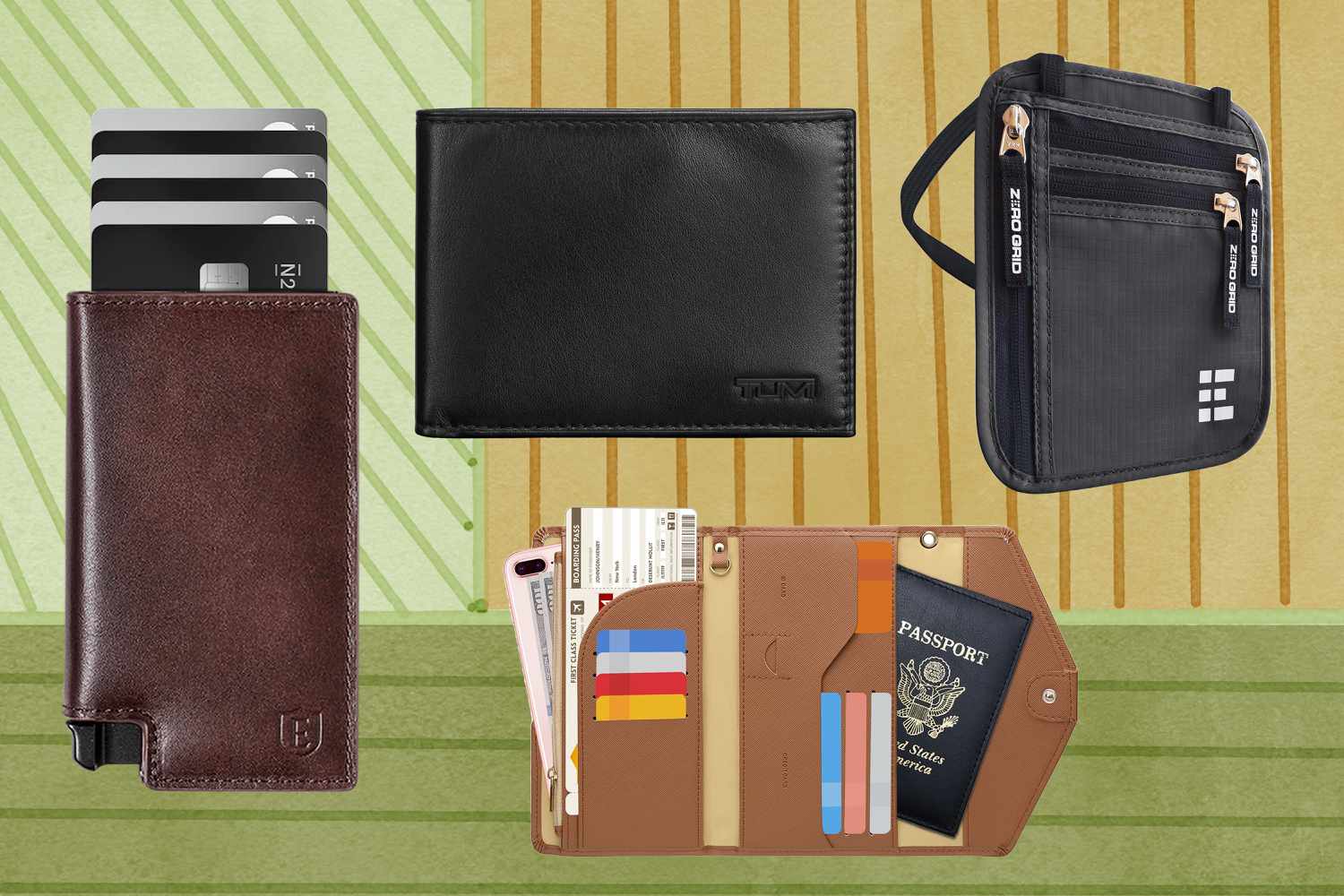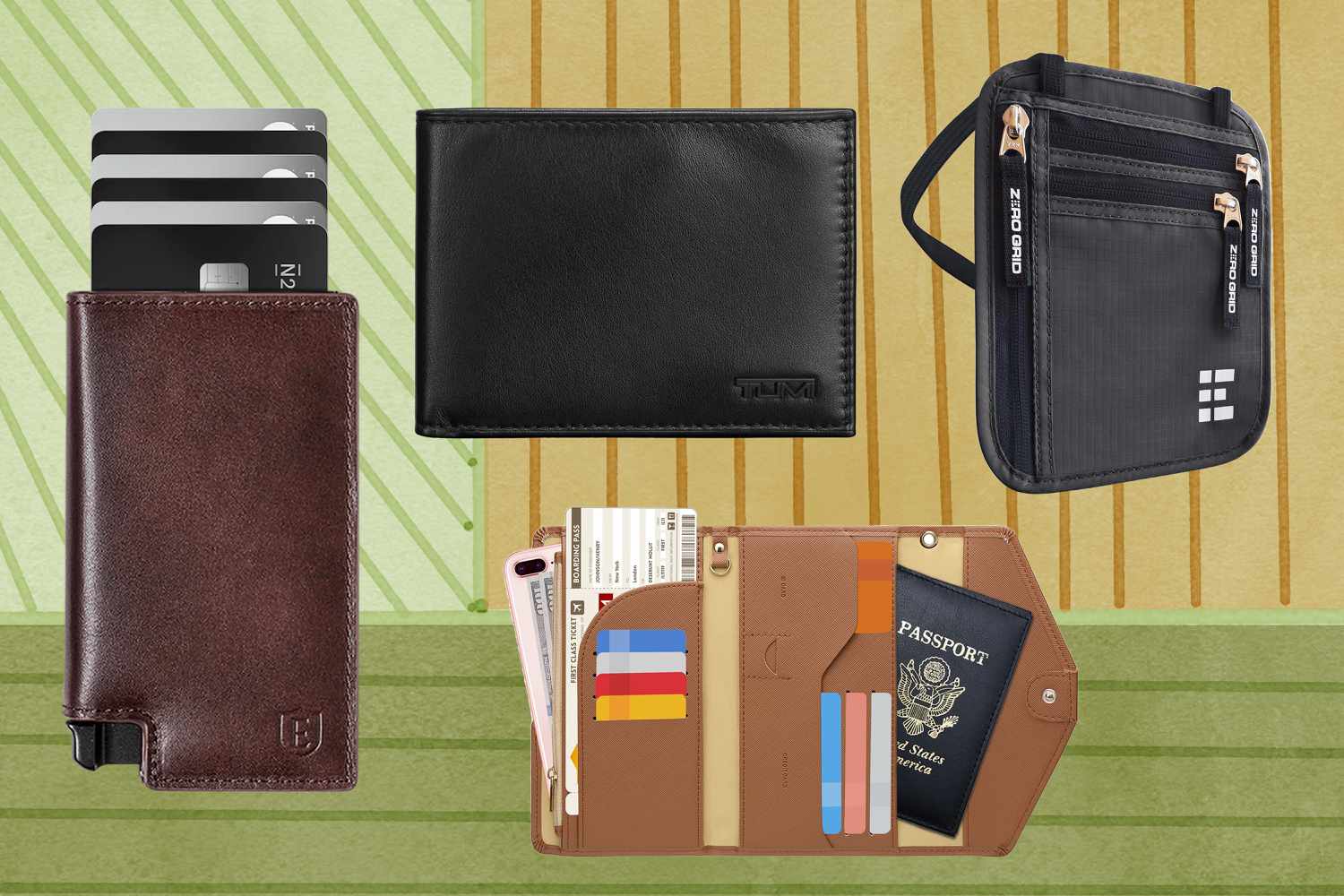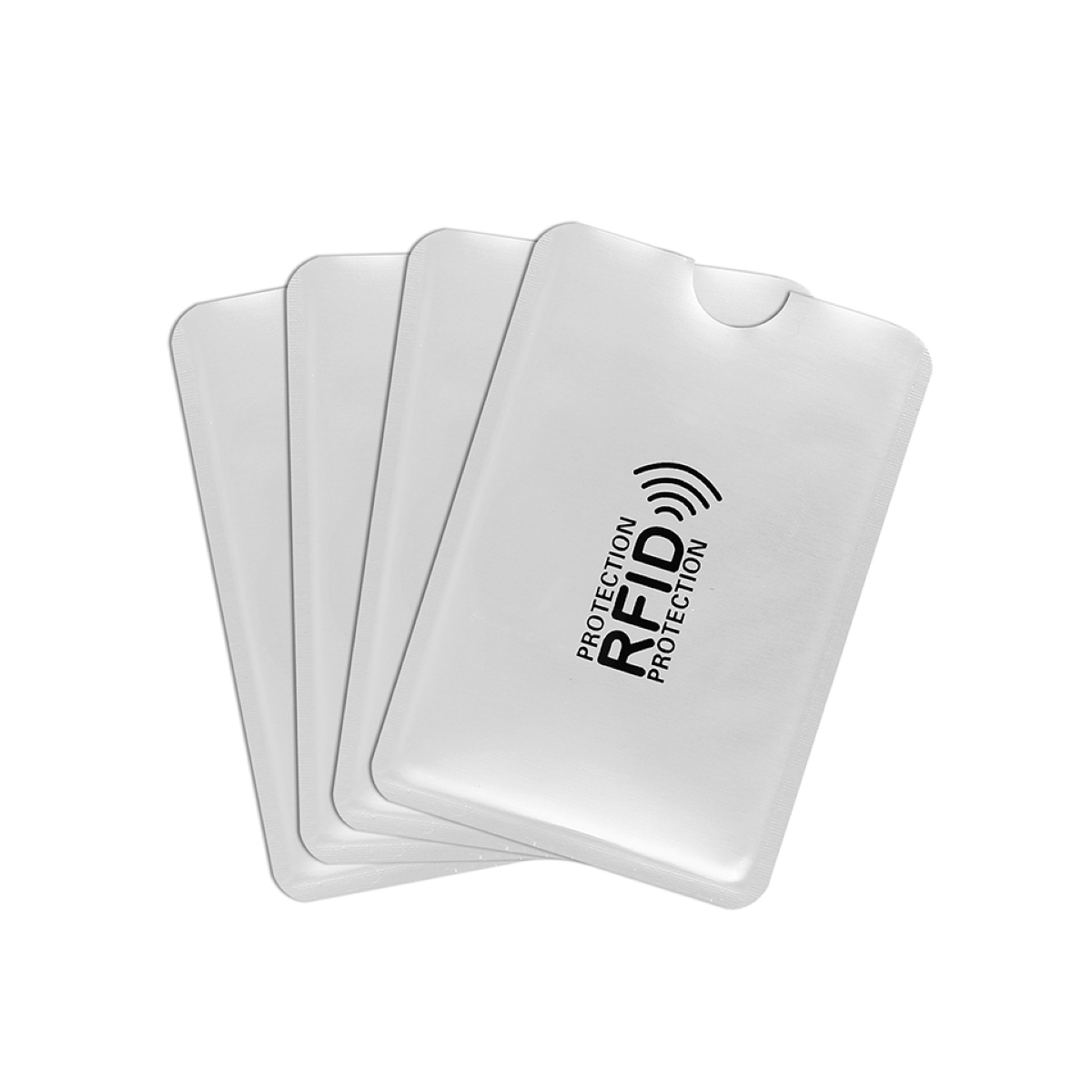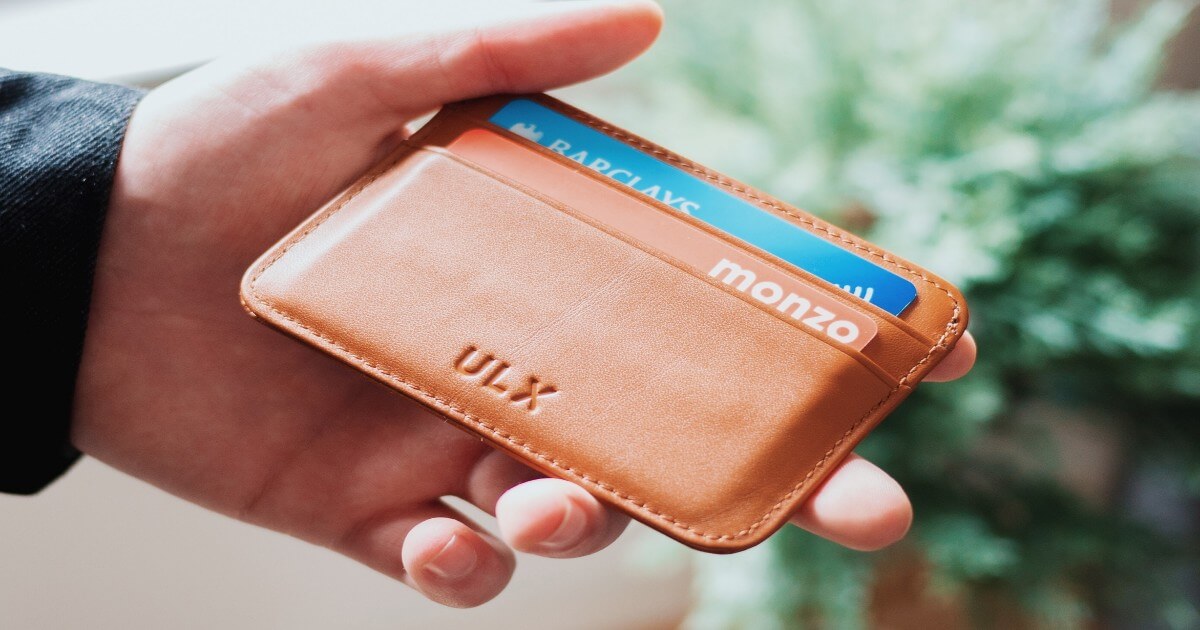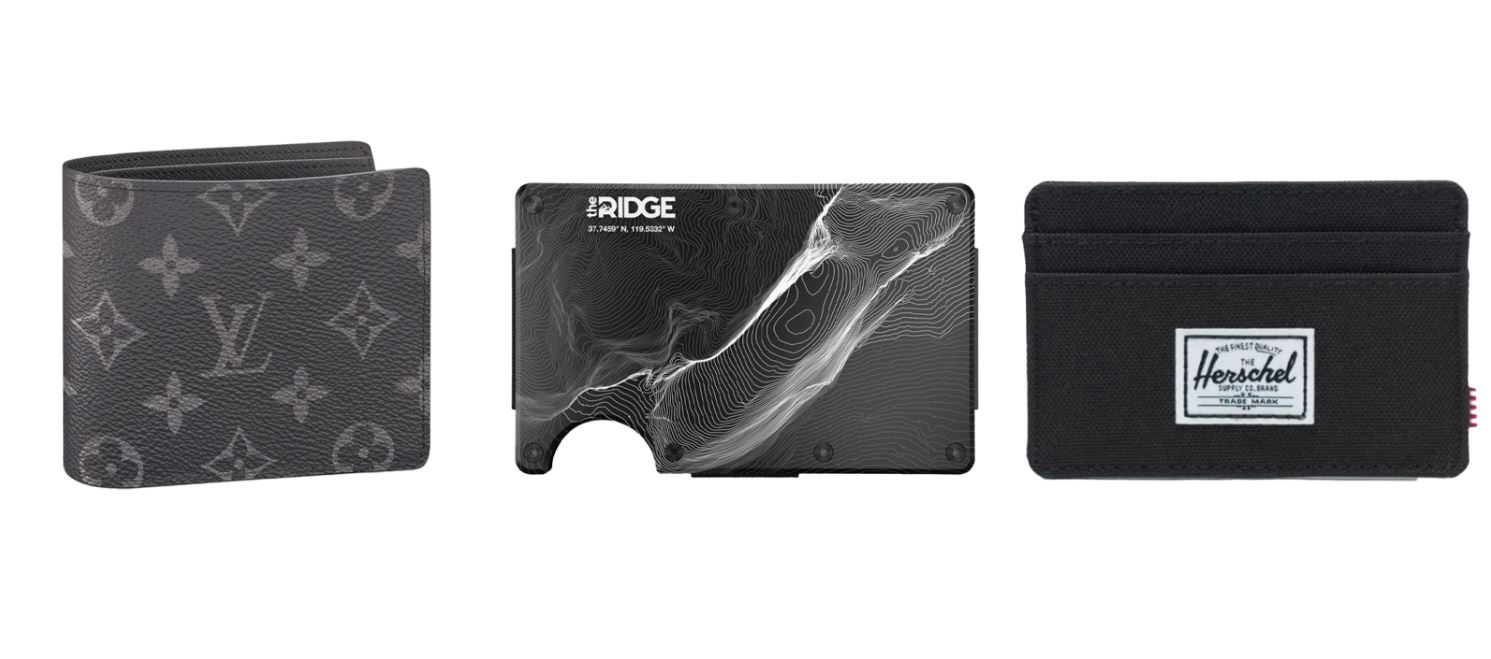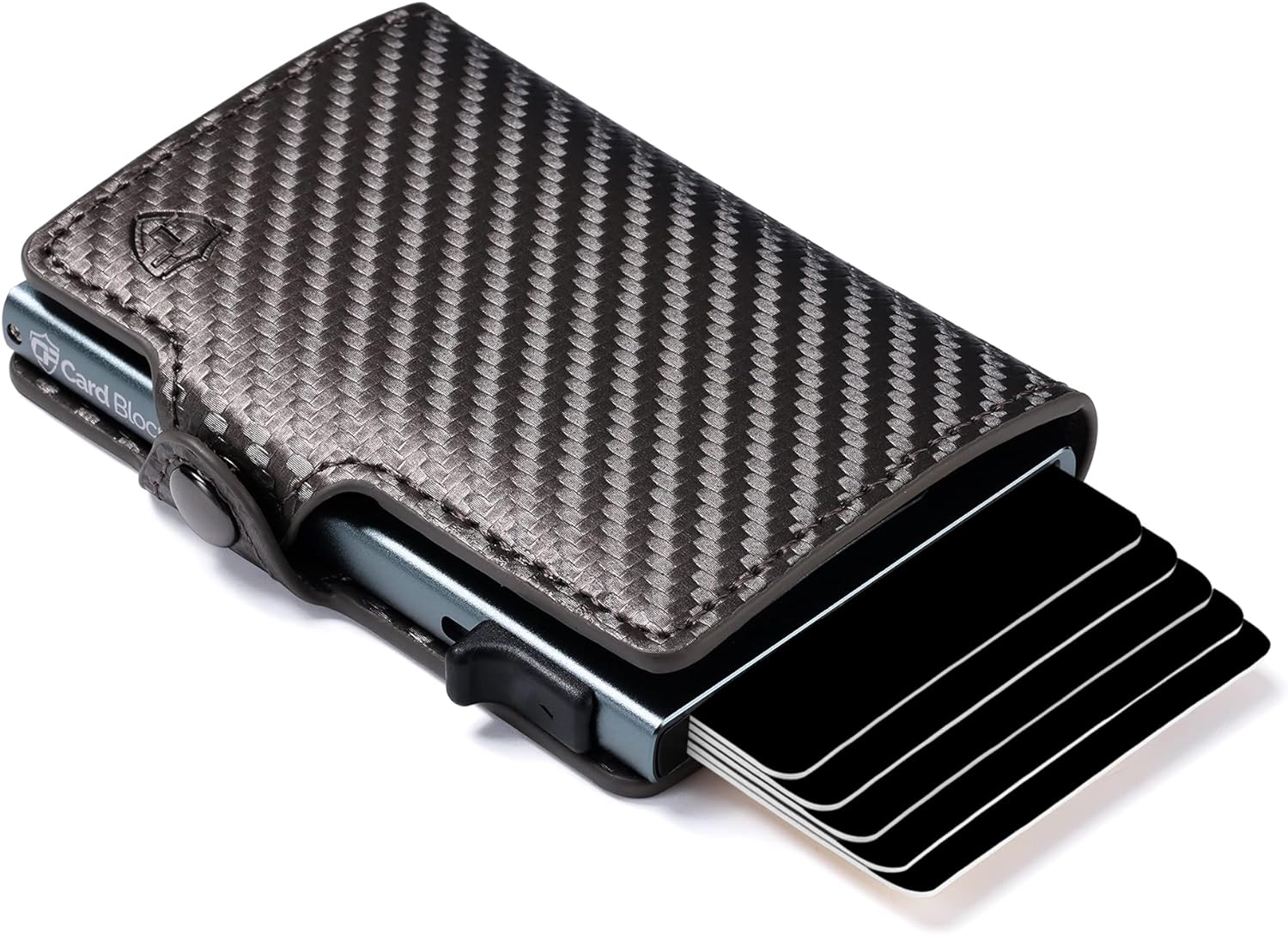Introduction
Protecting our personal information is becoming increasingly important in today’s digital age. With the rise of contactless payment systems and the use of RFID technology in various cards and documents, such as credit cards, passports, and driver’s licenses, there is a growing concern about potential security risks. This has led to the rise in popularity of RFID blocking wallets.
RFID, which stands for Radio Frequency Identification, is a technology that uses electromagnetic fields to automatically identify and track tags attached to objects. While this technology offers convenience and efficiency in various industries, it also poses potential risks to our personal data.
In this article, we will explore what RFID technology is, how it works, and the potential risks associated with it. We will also discuss the concept of RFID blocking wallets and how they can protect our sensitive information. Lastly, we will provide tips on choosing the right RFID blocking wallet and using it effectively.
By the end of this article, you will have a better understanding of RFID technology and the benefits of using an RFID blocking wallet to safeguard your personal information from unauthorized access.
What is RFID?
RFID, which stands for Radio Frequency Identification, is a technology that uses electromagnetic fields to automatically identify and track tags attached to objects. These tags consist of a microchip and an antenna that store and transmit information wirelessly.
RFID technology has various applications across industries, including asset tracking, inventory management, access control, and contactless payment systems. It offers several advantages over traditional barcodes and magnetic stripe cards, such as faster and more accurate scanning, the ability to read multiple tags simultaneously, and the ability to function without a direct line of sight.
The RFID system consists of three main components: the RFID tag, the RFID reader, and the RFID software. The tag, which is attached to the object, contains unique data that identifies it. The reader emits radio waves and captures the signals emitted by the tag. The software processes and interprets the data received from the reader, providing relevant information about the tagged object.
RFID tags can be passive, active, or semi-passive. Passive tags do not have their own power source and rely on the energy emitted by the reader to transmit signals. Active tags, on the other hand, have their own power source and can transmit signals over longer distances. Semi-passive tags have their own power source but rely on the reader’s energy to communicate.
Overall, RFID technology revolutionizes the way objects are tracked and identified, offering convenience and efficiency in various applications. However, with the widespread use of RFID-enabled cards and documents, there are concerns about the potential risks associated with unauthorized access to personal data.
How Does RFID Technology Work?
RFID technology works through the transmission of electromagnetic waves between the RFID tag and the RFID reader. The tag contains a microchip that stores information and an antenna that enables communication with the reader. When in proximity to the reader, the tag’s antenna picks up the electromagnetic waves emitted by the reader and uses the energy from these waves to power the microchip.
The RFID reader emits radio waves at a specific frequency. These waves create an electromagnetic field around the reader. When the RFID tag enters this field, it is energized by the radio waves and is able to transmit data back to the reader.
The information stored on the RFID tag can range from simple identification numbers to more complex data, such as product details or personal identification information. The data is typically stored in memory chips on the tag and can be read and written by the RFID reader.
There are two types of RFID systems: active and passive. In an active system, the RFID tag has its own power source, usually in the form of a battery. This allows for longer read ranges and more robust communication with the reader. Active RFID tags are often used in applications that require real-time tracking, such as tracking assets within a warehouse.
Passive RFID systems, on the other hand, do not have their own power source. Instead, they rely on the energy from the reader to power the tag and transmit data. When the reader emits radio waves, the tag uses this energy to send a response back to the reader. Passive RFID tags are commonly used in applications such as inventory management and access control.
RFID technology offers numerous benefits, including increased operational efficiency, reduced human error, and improved inventory management. However, it is important to be aware of the potential risks associated with RFID technology, especially when it comes to the security of personal information.
Potential Risks of RFID Technology
While RFID technology offers many benefits, it also poses potential risks when it comes to the security and privacy of personal information. Here are some of the key risks associated with RFID technology:
- Unauthorized access to personal data: RFID tags can store sensitive information, such as credit card numbers, passport details, and driver’s license data. If these tags are not properly secured, they could be read and intercepted by unauthorized individuals using RFID readers. This could lead to identity theft, financial fraud, or other forms of privacy breach.
- Data interception and cloning: RFID signals can be intercepted by malicious actors using specialized equipment. This allows them to capture and clone the information stored on the tags, potentially creating fraudulent copies of credit cards or other sensitive documents.
- Tracking and surveillance: RFID tags can be used to track the movement of individuals or assets without their knowledge or consent. This raises concerns about privacy and the potential for abuse, especially in scenarios where RFID tags are embedded in personal items or wearable devices.
- Denial of service attacks: RFID systems can be vulnerable to denial of service attacks, where an attacker floods the system with excessive requests or interference. This can disrupt the functionality of the RFID system, leading to operational inefficiencies or security vulnerabilities.
- Lack of standardization and regulation: The lack of standardized security protocols and regulations for RFID technology can create inconsistencies in the implementation of security measures. This can make it challenging for individuals and organizations to ensure the protection of their personal information.
It is important to be aware of these risks and take necessary precautions to protect your personal data when using RFID-enabled cards and documents. One effective way to mitigate these risks is by using an RFID blocking wallet.
What is an RFID Blocking Wallet?
An RFID blocking wallet is a special type of wallet designed to protect your personal information from unauthorized access through RFID technology. It contains built-in shielding materials that block the electromagnetic signals emitted by RFID readers, preventing them from accessing the data stored on your RFID-enabled cards and documents.
These wallets are constructed with RFID-blocking materials, such as metalized fabric or special polymers, which create a Faraday cage around the contents of the wallet. This effectively blocks the electromagnetic waves used by RFID readers, ensuring that your personal information remains secure.
RFID blocking wallets come in various styles and sizes, ranging from traditional bi-fold or tri-fold wallets to minimalist cardholders and passport covers. They are specifically designed to accommodate RFID-enabled cards, such as credit cards, debit cards, and key cards, as well as RFID-enabled documents, such as passports and driver’s licenses.
It is important to note that an RFID blocking wallet does not interfere with the functionality of your RFID-enabled cards. You can still use them normally by simply taking them out of the wallet when needed. The RFID blocking feature only activates when the cards are inside the wallet, providing an extra layer of security when you are not using them.
RFID blocking wallets are becoming increasingly popular among individuals who want to safeguard their personal information and prevent unauthorized access. They offer peace of mind, knowing that your sensitive data is protected from potential risks associated with RFID technology.
In the next section, we will delve into how an RFID blocking wallet works to provide this protection and discuss its benefits.
How Does an RFID Blocking Wallet Work?
An RFID blocking wallet works by using specialized materials that block or attenuate the signals emitted by RFID readers. These materials typically consist of metalized fabrics or polymers that create a barrier, preventing electromagnetic waves from reaching the RFID-enabled cards and documents stored inside the wallet.
The RFID blocking materials used in these wallets act as a Faraday cage, which is an enclosure that blocks external electromagnetic fields. This cage works by reflecting and absorbing the electromagnetic waves, preventing them from reaching the RFID tags and activating them.
When you place your RFID-enabled cards and documents inside an RFID blocking wallet, the blocking materials create a shield around them. This shield effectively blocks the electromagnetic signals and prevents RFID readers from detecting and reading the data stored on the tags.
It’s important to note that for the RFID blocking wallet to work effectively, the materials need to completely surround the RFID-enabled cards and documents. This means that the blocking materials should cover all sides of the items, including the front, back, and sides of the cards or documents.
Some RFID blocking wallets also feature additional security measures, such as zipper closures or snap buttons, to further protect your items from accidental slipping or unauthorized access.
By using an RFID blocking wallet, you can ensure that your personal information remains safe from potential risks associated with RFID technology. Whether you’re traveling, shopping, or simply going about your daily activities, an RFID blocking wallet provides peace of mind knowing that your sensitive data is protected.
In the next section, we will explore the benefits of using an RFID blocking wallet and why it’s a valuable investment for your personal security.
Benefits of Using an RFID Blocking Wallet
Using an RFID blocking wallet offers several benefits when it comes to protecting your personal information and ensuring your security. Here are some key advantages of using an RFID blocking wallet:
- Prevents unauthorized access: One of the primary benefits of an RFID blocking wallet is that it prevents unauthorized individuals from accessing the data stored on your RFID-enabled cards and documents. The blocking materials create a shield that effectively blocks the signals emitted by RFID readers, keeping your sensitive information safe.
- Protects against identity theft: By using an RFID blocking wallet, you reduce the risk of identity theft. Criminals cannot simply scan your cards or documents without your knowledge, reducing the likelihood of your personal information being compromised.
- Safeguards financial information: Credit cards and debit cards with RFID technology can be vulnerable to skimming, where thieves steal your card information remotely. An RFID blocking wallet provides an added layer of protection, making it difficult for criminals to intercept the signals and clone your card details.
- Preserves privacy: RFID blocking wallets help maintain your privacy by preventing unauthorized tracking and surveillance. The shielding materials block the signals that would otherwise allow your movement to be tracked using RFID technology embedded in personal items or wearable devices.
- Convenient and versatile: RFID blocking wallets are designed to be functional and stylish. They come in various styles, sizes, and materials, allowing you to choose one that suits your preferences. Whether you prefer a traditional wallet or a compact cardholder, there is an RFID blocking option available.
- Peace of mind: Perhaps the most significant benefit of using an RFID blocking wallet is the peace of mind it provides. Knowing that your personal information is secure and protected from potential risks associated with RFID technology allows you to confidently go about your daily activities without worry.
With the increasing prevalence of RFID technology, investing in an RFID blocking wallet is a wise decision to safeguard your personal information and maintain your privacy in today’s digital world.
In the following section, we will provide tips for choosing the right RFID blocking wallet to suit your specific needs.
Choosing the Right RFID Blocking Wallet
When it comes to selecting an RFID blocking wallet, there are a few important factors to consider to ensure that you choose the right one for your needs. Here are some tips to help you make the best choice:
- Material and Construction: Look for an RFID blocking wallet that is made of high-quality materials and sturdy construction. Consider a wallet with metalized fabrics or special polymers that provide effective RFID blocking capabilities while also offering durability and longevity.
- Size and Design: Consider the size and design of the wallet that best suits your lifestyle and preferences. Whether you prefer a traditional bi-fold or tri-fold wallet, a compact cardholder, or a passport cover, choose a design that accommodates your everyday needs.
- Card Capacity: Assess the number of RFID-enabled cards and documents you regularly carry and choose a wallet that can accommodate them. Look for wallets with multiple card slots, compartments, and pockets to keep your cards organized and easily accessible.
- Additional Security Features: Some RFID blocking wallets offer extra security features, such as zipper closures, snap buttons, or RFID blocking sleeves for individual cards. Consider if these additional features are important to you and choose a wallet that provides the level of security you desire.
- Style and Aesthetics: While functionality is essential, don’t forget to choose a wallet that reflects your personal style and preferences. RFID blocking wallets come in a variety of designs, colors, and finishes, allowing you to find one that suits your fashion sense.
- Reviews and Reputation: Before making a purchase, read reviews and check the reputation of the brand or manufacturer. Look for positive feedback regarding the RFID blocking capabilities, durability, and overall quality of the wallet you are considering.
By considering these factors, you can choose an RFID blocking wallet that not only offers effective protection for your personal data but also meets your style and functionality requirements.
In the next section, we will provide some tips on how to use an RFID blocking wallet effectively to maximize its protective capabilities.
Tips for Using an RFID Blocking Wallet
Using an RFID blocking wallet is an effective way to protect your personal information from potential risks associated with RFID technology. Here are some tips to help you use your RFID blocking wallet effectively:
- Keep RFID-enabled cards inside the wallet: To ensure maximum protection, always keep your RFID-enabled cards and documents inside the RFID blocking wallet when you’re not using them. This way, the shielding materials can create a barrier to block the signals emitted by RFID readers.
- Avoid leaving the wallet open: When you’re not actively accessing your cards, make sure to close your RFID blocking wallet. This helps maintain the shielded environment and prevents accidental skimming or unauthorized access.
- Be mindful of RFID-enabled documents: If your RFID blocking wallet has a designated compartment for documents such as passports, always place your passport inside that specific compartment. This ensures that the built-in RFID blocking materials effectively shield the RFID chip embedded in your passport.
- Take cards out of the wallet when necessary: When you need to use an RFID-enabled card or document, take it out of the RFID blocking wallet to allow it to be read by the RFID reader. Once you’re done, promptly return it to the wallet for continued protection.
- Regularly check for any wear and tear: Over time, the RFID blocking materials in your wallet may experience wear and tear. Periodically inspect your wallet to ensure that the blocking materials are intact and functioning effectively. If you notice any damage or decreased effectiveness, consider replacing your RFID blocking wallet.
- Educate yourself about RFID technology: Stay informed about the latest developments and advancements in RFID technology and its associated risks. This knowledge will help you understand the importance of using an RFID blocking wallet and enable you to make informed decisions about protecting your personal information.
By following these tips, you can maximize the effectiveness of your RFID blocking wallet and ensure that your personal information remains secure.
In the concluding section, we will summarize the key points discussed in this article and reiterate the importance of using an RFID blocking wallet for protecting your personal information.
Conclusion
RFID technology has undoubtedly revolutionized various industries, offering convenience and efficiency. However, it also poses potential risks when it comes to the security and privacy of our personal information. With the increasing prevalence of RFID-enabled cards and documents, it has become crucial to take proactive steps to protect our sensitive data.
Using an RFID blocking wallet is an effective solution to safeguard your personal information from unauthorized access and potential risks associated with RFID technology. These wallets use specialized materials that block or attenuate the signals emitted by RFID readers, creating a shield that protects your RFID-enabled cards and documents.
By investing in an RFID blocking wallet, you can enjoy several benefits, including preventing unauthorized access, safeguarding financial information, protecting against identity theft, and maintaining your privacy. Additionally, RFID blocking wallets come in various styles, sizes, and designs, allowing you to find one that fits your lifestyle and reflects your personal taste.
When using an RFID blocking wallet, remember to keep your RFID-enabled cards inside the wallet, avoid leaving it open, and take cards out only when necessary. Regularly inspect your wallet for any wear and tear, and stay informed about RFID technology to better mitigate risks.
In a world where personal information security is paramount, an RFID blocking wallet provides peace of mind, ensuring that your personal information remains safe from potential threats.
So, take the necessary steps to protect your personal information and invest in an RFID blocking wallet today. Your privacy and security are worth it.









